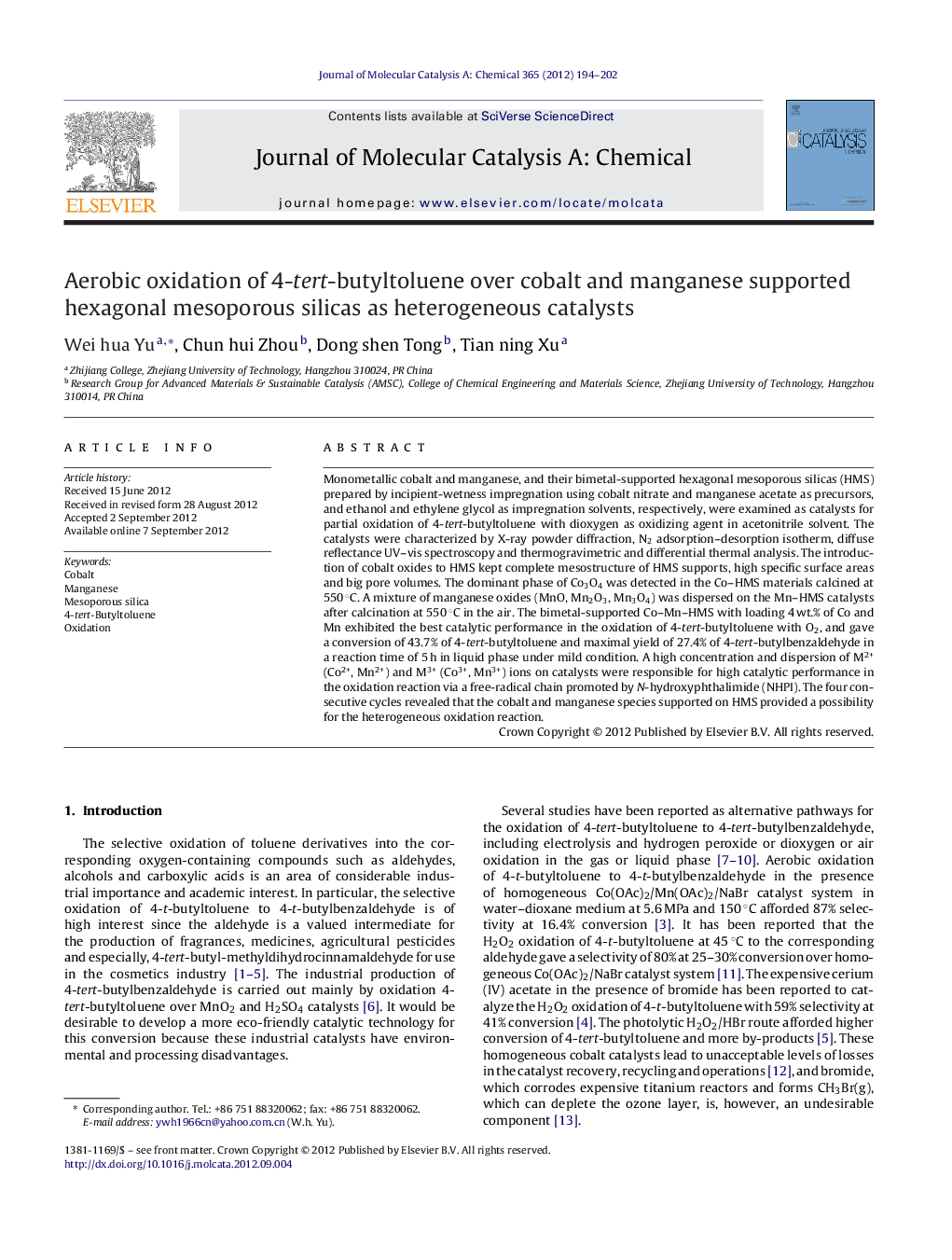| Article ID | Journal | Published Year | Pages | File Type |
|---|---|---|---|---|
| 66096 | Journal of Molecular Catalysis A: Chemical | 2012 | 9 Pages |
Monometallic cobalt and manganese, and their bimetal-supported hexagonal mesoporous silicas (HMS) prepared by incipient-wetness impregnation using cobalt nitrate and manganese acetate as precursors, and ethanol and ethylene glycol as impregnation solvents, respectively, were examined as catalysts for partial oxidation of 4-tert-butyltoluene with dioxygen as oxidizing agent in acetonitrile solvent. The catalysts were characterized by X-ray powder diffraction, N2 adsorption–desorption isotherm, diffuse reflectance UV–vis spectroscopy and thermogravimetric and differential thermal analysis. The introduction of cobalt oxides to HMS kept complete mesostructure of HMS supports, high specific surface areas and big pore volumes. The dominant phase of Co3O4 was detected in the Co–HMS materials calcined at 550 °C. A mixture of manganese oxides (MnO, Mn2O3, Mn3O4) was dispersed on the Mn–HMS catalysts after calcination at 550 °C in the air. The bimetal-supported Co–Mn–HMS with loading 4 wt.% of Co and Mn exhibited the best catalytic performance in the oxidation of 4-tert-butyltoluene with O2, and gave a conversion of 43.7% of 4-tert-butyltoluene and maximal yield of 27.4% of 4-tert-butylbenzaldehyde in a reaction time of 5 h in liquid phase under mild condition. A high concentration and dispersion of M2+ (Co2+, Mn2+) and M3+ (Co3+, Mn3+) ions on catalysts were responsible for high catalytic performance in the oxidation reaction via a free-radical chain promoted by N-hydroxyphthalimide (NHPI). The four consecutive cycles revealed that the cobalt and manganese species supported on HMS provided a possibility for the heterogeneous oxidation reaction.
Graphical abstractFigure optionsDownload full-size imageDownload high-quality image (128 K)Download as PowerPoint slideHighlights► The catalytic system for aerobic oxidation of 4-t-butyltoluene has been employed. ► The heterogeneous catalysts in combination with NHPI have been developed. ► The catalyst gives high conversion of 4-t-butyltoluene and selectivity to aldehyde. ► The catalyst exhibits easy recovery, and steady reuse. ► The mechanism for oxidation of 4-t-butyltoluene has been developed.
